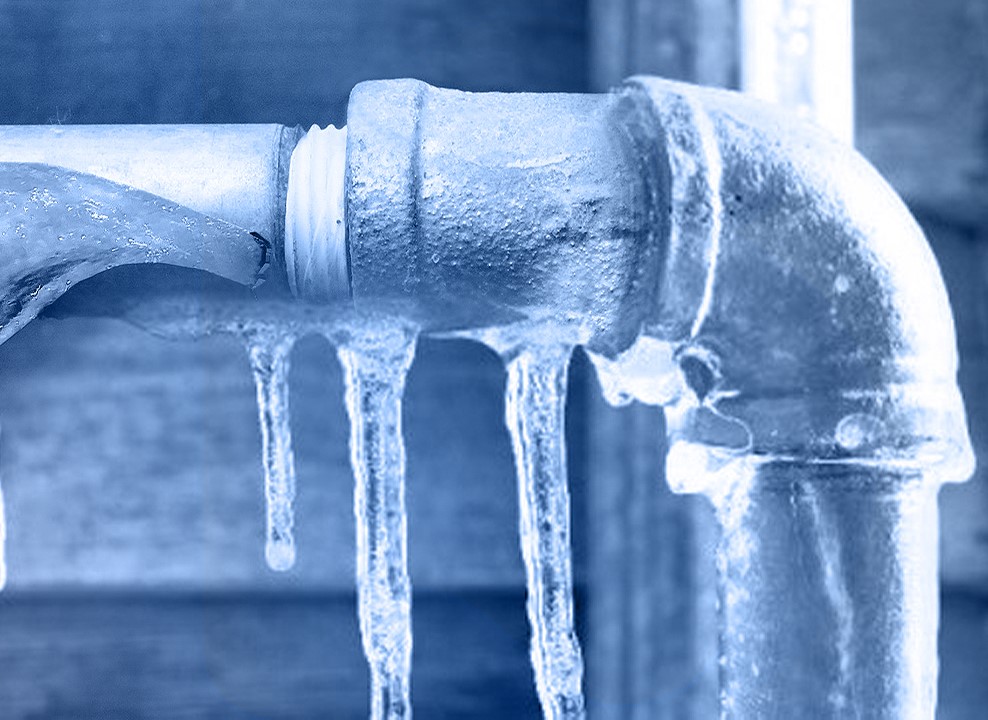Protecting Against Frozen Plumbing in Winter: Pro Tips
Protecting Against Frozen Plumbing in Winter: Pro Tips
Blog Article
Just how do you feel about Helpful Tips to Prevent Frozen Pipes this Winter?

Winter can wreak havoc on your pipes, particularly by freezing pipelines. Here's just how to avoid it from occurring and what to do if it does.
Introduction
As temperature levels drop, the threat of icy pipelines rises, potentially leading to expensive fixings and water damages. Understanding exactly how to stop frozen pipes is crucial for property owners in cool climates.
Understanding Icy Pipelines
What creates pipelines to freeze?
Pipes freeze when subjected to temperatures listed below 32 ° F (0 ° C) for prolonged durations. As water inside the pipelines ices up, it increases, taxing the pipeline wall surfaces and possibly triggering them to rupture.
Risks and damages
Frozen pipelines can lead to water system disturbances, residential property damage, and pricey fixings. Burst pipelines can flooding homes and cause substantial structural damage.
Indicators of Frozen Pipeline
Identifying icy pipes early can prevent them from breaking.
How to recognize frozen pipelines
Seek lowered water circulation from faucets, uncommon odors or sounds from pipes, and visible frost on revealed pipes.
Avoidance Tips
Protecting vulnerable pipelines
Cover pipes in insulation sleeves or utilize warmth tape to safeguard them from freezing temperature levels. Concentrate on pipes in unheated or outside locations of the home.
Home heating techniques
Keep interior areas sufficiently warmed, specifically areas with plumbing. Open cabinet doors to allow warm air to circulate around pipes under sinks.
Safeguarding Outside Plumbing
Garden hose pipes and outdoor faucets
Disconnect and drain pipes yard tubes prior to wintertime. Mount frost-proof faucets or cover outside taps with protected caps.
What to Do If Your Pipes Freeze
Immediate activities to take
If you believe icy pipes, keep faucets open to eliminate pressure as the ice thaws. Use a hairdryer or towels soaked in hot water to thaw pipes slowly.
Long-Term Solutions
Architectural modifications
Consider rerouting pipelines away from outside wall surfaces or unheated locations. Add extra insulation to attic rooms, cellars, and crawl spaces.
Updating insulation
Purchase top notch insulation for pipes, attics, and wall surfaces. Proper insulation assists keep consistent temperatures and lowers the risk of frozen pipelines.
Verdict
Avoiding frozen pipelines calls for aggressive measures and quick reactions. By comprehending the reasons, indicators, and safety nets, home owners can protect their plumbing throughout winter.
6 Proven Ways to Prevent Frozen Pipes and Protect Your Home
Disconnect and Drain Garden Hoses
Before winter arrives, start by disconnecting your garden hoses and draining any remaining water. Close the shut-off valves that supply outdoor hose bibs and leave the outdoor faucet open to allow any residual water to drain. For extra protection, consider using faucet covers throughout the colder months. It’s also important to drain water from any sprinkler supply lines following the manufacturer’s directions.
Insulate Exposed Pipes
Insulating your pipes is an effective way to prevent freezing. Pipe insulation is readily available at home improvement stores and is relatively inexpensive. Pay close attention to pipes in unheated areas such as the attic, basement, crawl spaces, or garage. Apply foam insulation generously to create a buffer against the cold. You can also wrap your pipes in heat tape or thermostat-controlled heat cables for added warmth.
Seal Air Leaks
Inspect your home for any cracks or openings that could let in cold air. Seal any holes around the piping in interior or exterior walls, as well as the sill plates where your home rests on its foundation. Additionally, make sure to keep your garage door closed unless you’re entering or exiting. Leaving it open creates a significant air leak that can lead to frozen pipes.
Allow Warm Air Circulation
During cold snaps, it’s essential to allow warm air to circulate evenly throughout your home. Leave interior doors ajar to promote better airflow. Open kitchen and bathroom cabinets to help distribute heat consistently around the rooms. If you have small children or pets, be sure to remove any household chemicals or potentially harmful cleaners from open cabinets for safety.
Let Faucets Drip
A small trickle of water can make a big difference in preventing ice formation inside your pipes. When temperatures drop significantly, start a drip of water from all faucets served by exposed pipes. This continuous flow helps prevent the water from freezing. Additionally, running a few faucets slightly can relieve pressure inside the pipes, reducing the chances of a rupture if the water inside does freeze.
https://choateshvac.com/6-proven-ways-to-prevent-frozen-pipes-and-protect-your-home/

As a person who reads about 6 Ways to Prevent Frozen Pipes, I figured sharing that piece of content was beneficial. Are you aware of someone else who is involved in 6 Ways to Prevent Frozen Pipes? Feel free to promote it. Thanks so much for your time invested reading it.
Click Here Report this page